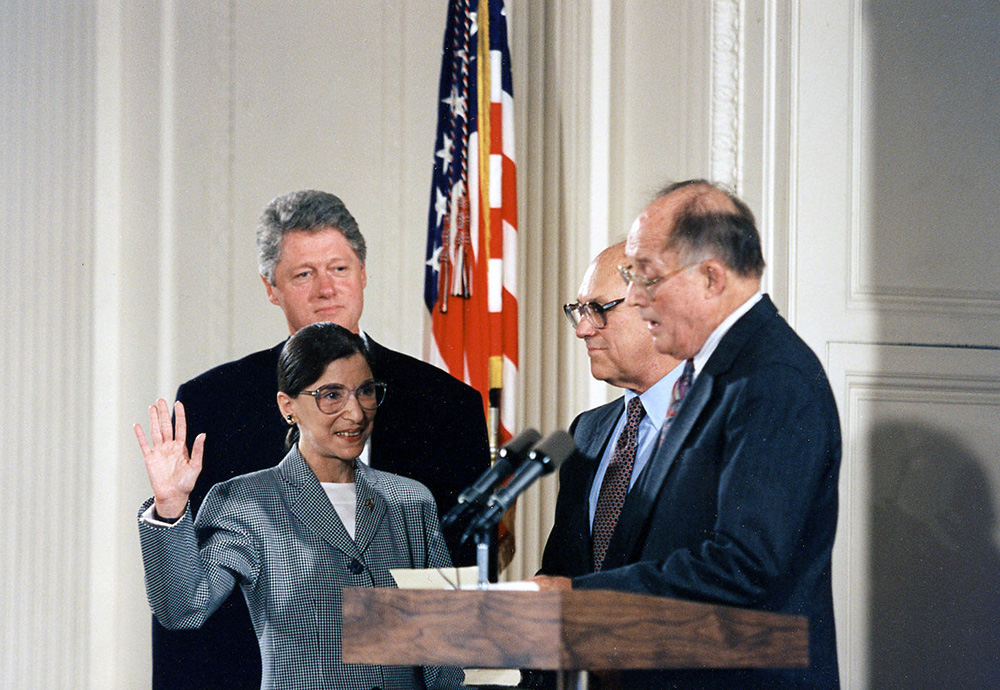
“Times are changing,” Ruth Bader Ginsburg observed when notified of her nomination to the Supreme Court of the United States by President William Clinton. Elucidating on the comments she said “The president has made that clear by appointing me . . . .” Only the second woman to be nominated to the Supreme Court of the United States, she took her judicial oath on August 10, 1993. Chief Justice William H. Rehnquist administered the judicial oath to Justice Ginsburg in a private ceremony held in the Supreme Court Building. In taking the oath, she promised to “render equal justice.” Later in the day, a ceremony was held at the White House with President Clinton in attendance. With these simple ceremonies, she took her seat, embarking on her twenty-seven year career on the Supreme Court. At the time of her death in September 2020, she had become an icon and was well known throughout the United States and around the world.
Her appointment to the Bench brought her almost full circle from her early career as an advocate for women’s rights before the Bench to sitting on the Bench that would allow her to review discriminatory laws. In her career with the ACLU, she argued many cases weakening the foundations of discrimination, and in that process, was able to help overturn a number of restrictions that penalized women. She argued six cases before the Supreme Court before being appointed to serve on that Bench. Although she became known as a champion of women’s rights, she worked to eradicate all gender inequity and to strike down laws that treat men and women differently. Two important cases in which she advocated that the Court should apply equal benefits to male spouses demonstrate these achievements. In the case of Frontiero v. Richardson (1972), she sought to obtain the same benefits for a male spouse of a servicewoman that the military accorded the female spouses of servicemen. In the second, Weinberger v. Wiesenfield (1974), Ginsburg sought to obtain social security benefits for a widower that had been earned by his deceased wife. At that time the benefits were automatically extended to minor children and to a surviving female spouse. Again, she prevailed, and the law was applied to include the surviving spouse, regardless of sex.
Justice Ginsburg was prolific on the Court, authoring 213 majority opinions as well as dissents and concurrences. According to a tribute written by Clarence Thomas, she was not only prolific, but speedy. He said she “placed a premium on a fast turnaround of opinion assignments.” He observed that she was “stellar when it came to this, quickly producing well-written, concise opinions.” He said that her trademark . . . efficiency became a source of humorous banter as well as legend.” He said it earned her the nickname of “Rapid Ruth.”
In a life dedicated to the law, both as an advocate and a judge, Justice Ginsburg place a premium on respect and civility. Throughout her career on the bench she was known as a courteous, agreeable colleague. At a ceremony honoring her at the Harvard Radcliffe Institute for Advanced Study, Justice Ginsburg’s advice those present to “Fight for the things that you care about. But do it in a way that will lead others to join you.” Wise words for all of us.




